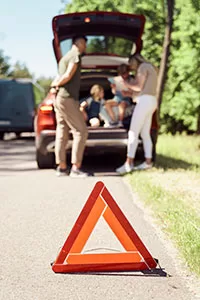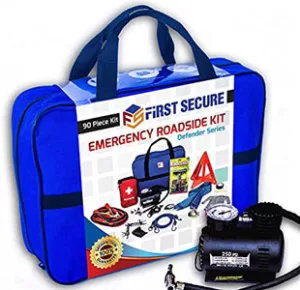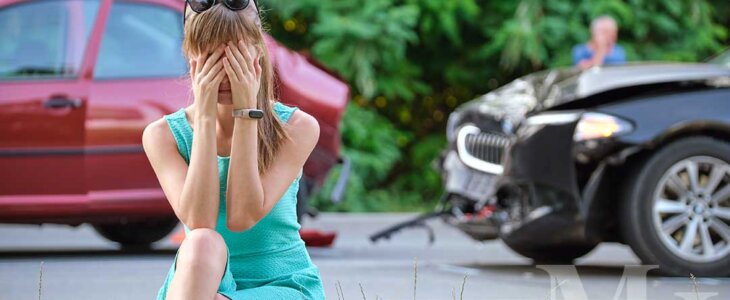How do you pull over safely on the side of a highway?
Pulling off onto the side of the road puts you at an increased risk of a crash, so only do this in the event of an emergency.
Most people aren’t worried about getting into an accident when they are stopped and pulled to the side away from traffic, but we need to reconsider this assumption.
If you park your car on the shoulder of the road, you’re never safe. In fact, you’re much more likely to end up getting into a car accident while parked on the side of the freeway than driving along the freeway.
Stopping your car on the side of the road when dozens of cars are passing you every minute at a high speed is dangerous. While this might sound like a no-brainer, many drivers still make this mistake over and over again.

People are killed or severely injured in crashes involving stopped or disabled vehicles pulled to the side of the road. According to AAA Foundation for Traffic Safety, 12 percent of interstate fatalities happen on the side of the highway.
There are even more traffic injuries in addition to fatalities on the side of the road.
The image here with the family shows a catastrophic accident waiting to happen if the family got rear-ended.
We have all seen the videos on the news of Police Officers helping a stranded motorist and all of a sudden a car smashes into the parked car. Think about this for a second, the Police Officer’s vehicle has its red and blue lights flashing, his tail lights are on, and someone still runs into his car! The video below is courtesy of abc7.com
What types of stopped-car crashes occur on the side of the road?
There are typically three types of stopped-vehicle crashes:
- Two-car —When one vehicle hits another stationary vehicle.
- Pedestrian — When a person on foot is struck after exiting a stopped vehicle.
- Single-car —When a car leaves the roadway.
Roadside car accidents factors:
- Just occupying the space – The risk increases just being near a highway with fast-moving traffic. The risk of being struck as a pedestrian if you get out of the car, or of a fatal crash increases with speed of cars moving past you.
- Getting off the main road and hitting debris – If traveling at a high speed and moving off, you may not be able to stop suddenly to avoid shoulder potholes and roadside debris
- Getting back on the main road and merging — To safely re-enter requires getting back up to speed without the aid of an on-ramp and then merging
To avoid roadside emergencies and unnecessary stopping on roadways, motorists should first and foremost verify their vehicle is in good working condition before traveling.
Vehicle Checklist
- Properly Inflated Tires
- Plenty of Windshield Washer Fluid
- Inspected Belts and Hoses
- Filled Radiator
- Good Spare Tire
- Enough Fuel
- Ensure the Engine Has No Known Malfunctions
- Emergency Kit (including reflective triangles, a flashing warning light, flashlight, jumper cables, temporary flat tire repair, a blanket, water, and a reflective vest)
- Make sure to always travel with your mobile phone, and bring the charging cable to keep the phone 100% charged while driving

Kits like this are available from Amazon.
https://www.amazon.com/First-Secure-Emergency-Assistance-Compressor/dp/B01C96AFWU
ASSESS
Find a Safe Place
If your vehicle does become disabled, do your best to get it off the travel portion of the road and onto the shoulder, if possible. If there is an opportunity to reach an off-ramp or parking lot, consider that option, even if it means driving on a flat tire or damaging a rim. The same is true if you are involved in a minor vehicle crash and your vehicle can be moved. The further from the travel portion of the highway you can be, the safer you will be.
Solutions
- Don’t stop on the shoulder unless there is an emergency.
- If you have to stop, pull as far off to the right as possible.
- Leave flashers on and make your car visible.
- Leave Headlights and taillights on.
- Keep the engine running if possible so the battery does not go dead.
- Put out Reflective Triangles
- Do Not stand behind or in front of your car.
- USE GOOD JUDGMENT & STAY VIGILANT
*Don’t travel without roadside assistance (which can be purchased with your car insurance or through agencies like AAA) and keep their number easily accessible and loaded into your phone.
MOVING YOU FORWARD . . .
Mary Higgins, Esq. is an experienced car accident lawyer to help you fight for the rights of being a crash victim. We understand what is at stake after an accident. That’s why our firm fights for maximum compensation.
Call Mary Higgins, Esq. at 302-894-4357 we can help you!

Please Check Our Past Client Reviews
(This article is for informational purposes only and should not be relied upon for legal advice. Your case should be reviewed by an attorney to determine the proper legal advice for your situation.)
